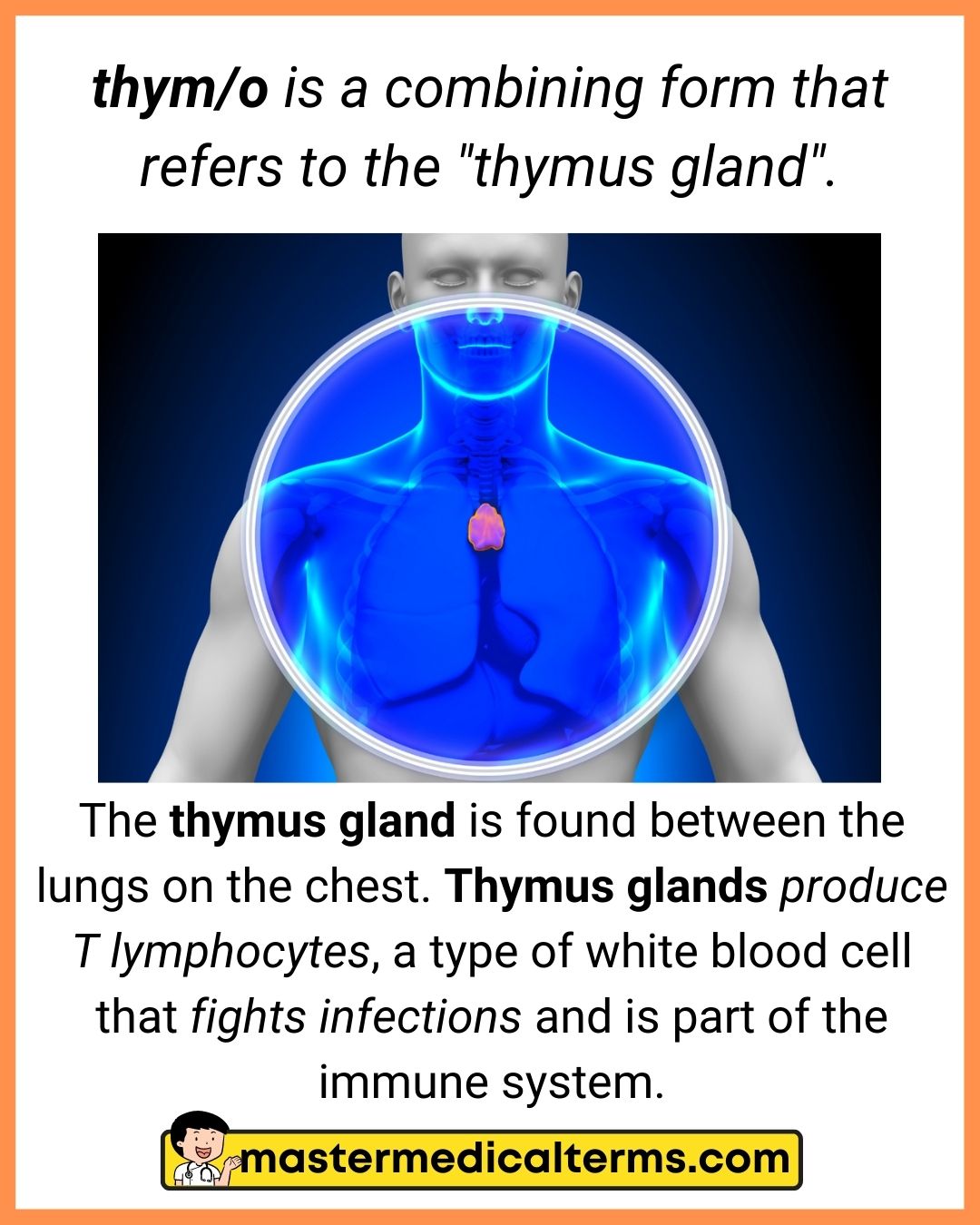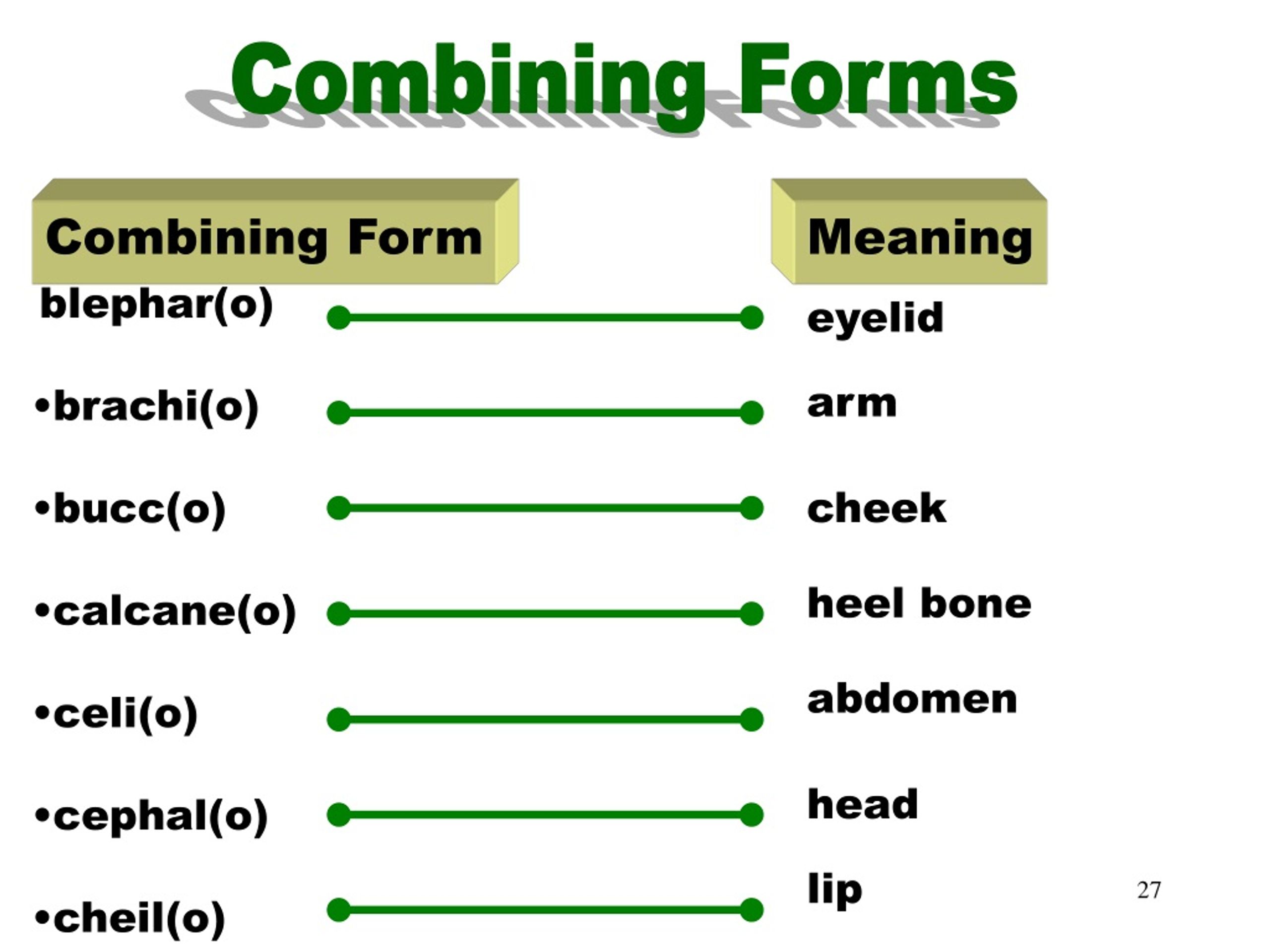The Combining Form For Gland Is
.jpg)
Urgent clarification needed: The combining form for gland is causing widespread confusion across medical and scientific communities.
The correct combining form, crucial for precise medical terminology, is under debate, leading to potential errors in documentation and communication.
The Core Issue
The core of the controversy revolves around the use of "adeno-" versus "glandulo-" as the primary combining form. Both forms are frequently encountered in medical texts.
While "adeno-" is most commonly associated with glands, its specific meaning pertains to glandular epithelium. This distinction is vital for accuracy.
Who is Affected?
The confusion directly impacts healthcare professionals, medical students, researchers, and anyone involved in creating or interpreting medical literature. Inaccurate usage could lead to misdiagnosis or incorrect treatment plans.
Medical coders and billers are also affected. Using the wrong combining form could result in denied claims or incorrect billing codes.
Publishers of medical textbooks and journals have a responsibility to ensure consistent and accurate usage.
What is the Correct Form?
Expert sources, including leading medical dictionaries like Stedman's Medical Dictionary, clarify the nuances. "Adeno-" refers to a gland or glandular tissue.
"Glandulo-" is sometimes used but is less frequent and generally considered redundant when "adeno-" is appropriate. The preference depends on the specific context and the desired level of precision.
For example, adenocarcinoma specifically refers to a cancer originating from glandular epithelium.
Where is the Confusion Occurring?
The issue appears in various forms of medical communication globally. This includes textbooks, research papers, clinical reports, and online medical resources.
Differences in regional terminology standards also contribute to the problem. Variations exist between American and European medical terminology.
Online forums and educational platforms are hotspots for the dissemination of both correct and incorrect information. The spread of misinformation further exacerbates the problem.
When Did This Become a Problem?
The debate over proper usage has persisted for years, with no single, universally accepted standard. The increasing volume of medical information online has amplified the confusion.
Advances in medical imaging and diagnostic techniques necessitate greater precision in terminology. The need for clear communication is more critical than ever.
Recent calls for standardization within medical coding systems have brought the issue back into the spotlight.
How Can the Confusion Be Addressed?
Increased awareness and education are essential first steps. Medical schools and training programs should emphasize the importance of precise terminology.
Medical dictionaries and style guides must provide clear and consistent definitions. Publishers need to enforce these standards in their publications.
Professional medical organizations should collaborate to establish standardized guidelines. The goal is to promote uniformity and minimize ambiguity.
Immediate Actions
Healthcare professionals should consult reputable medical dictionaries and style guides when in doubt. Cross-referencing multiple sources is crucial.
Educational institutions need to review their curricula to ensure accurate instruction on medical terminology. Students must be taught the subtle differences in meaning.
Organizations involved in medical coding and billing should adopt standardized guidelines. This will help prevent errors and ensure accurate reimbursement.
Next Steps
Leading medical organizations are planning a forum to address the standardization of the combining form for gland. The outcomes of this forum will be critical.
Further research is needed to assess the prevalence of inaccurate usage in medical literature. Data on the frequency of errors will help inform future interventions.
Regular updates and clarifications will be disseminated through professional publications and online resources. Stay informed about the latest developments in medical terminology.


.jpg)

+aden(o)+adren(o).jpg)

+thyr/o+thyroid+gland+thyroid/o+thyroid+gland.jpg)
.jpg)


.jpg)

.jpg)
+gland+adren(o)%2C+adrenal(o)+adrenal+glands.jpg)
.jpg)



